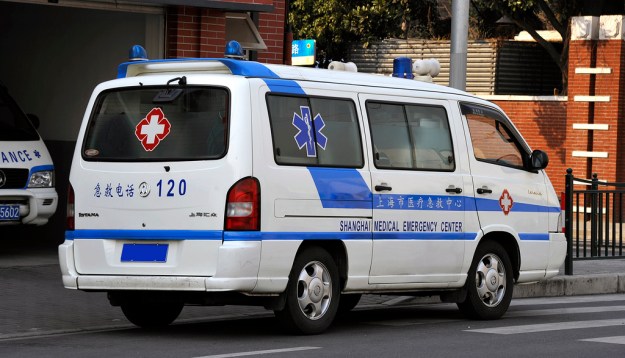
As anyone who’s ever been to China, or even to a local Chinatown in their city, will tell you, a visit equals a mecca for all things counterfeit. Given how many products are made in the far east region, this isn’t surprising. But before you find laughs in poorly designed fake iPads, Gucci bags, and Rolex watches, realize that there may be an even bigger issue at hand. China has moved on from creating fake consumer products and onto illegal medical vans otherwise known as “black ambulances.”
According to reports in China’s Global Times newspaper, unauthorized ambulances in China are becoming increasingly common. The perpetrators’ intent is to scam medical victims for cold hard cash. Many of these black ambulances lack the appropriate medical tools to sustain a vulnerable patient’s health in between transport, and some of the workers inside the van aren’t technically licensed or trained. Scammed victims are also allegedly taken on longer routes to drive up mileage prices, or are transported to a poorly-equipped private clinic entirely. If additional services or on-board treatments were given during the ride, black ambulances will attempt to tack on extra fees.
“We’ve known for years that many patients die in these ‘black ambulances,’ or soon afterwards, because of the lack of proper care and equipment,” Ma Yanming, a publicity official from Beijing Health Bureau, told the Global Times. The number of black ambulances has been steadily rising in major Chinese cities, including Shanghai, Shenzhen, and Guangzhou.
It’s easy to confuse the black ambulances from the real ones because they are physically identical, the Global Time reports. Both vans bare the same flashing lights on the roofs and are painted with the same emergency logo, and black ambulances often offer lower rates than official ambulances (of course, before revealing the hidden on-board treatment charges upon payment). Due to high levels of corruption in the country, unauthorized individuals and agencies can purchase ambulances from hospitals in an effort to reap profit for both parties.
In Beijing, there are currently about 400 official ambulances – a significantly low number to accommodate the second largest Chinese city with a population of more than 20 million people. “The short supply of official ambulances has resulted in a growing number of black ambulances,” Yanming said.
New regulations by the Beijing Health Bureau – due to take effect on February 1 – will impose a ban on non-local ambulances from picking up Beijing-based patients. Still, who knows how much of this will help curb the deadly activity plaguing the city. Much of the responsibility will rely on traffic cops to ensure black ambulances aren’t in operation, and in a largely dense city like Beijing, it will be difficult to track the heightened amount of such activities.
Image credit: Flickr/swat_hk


